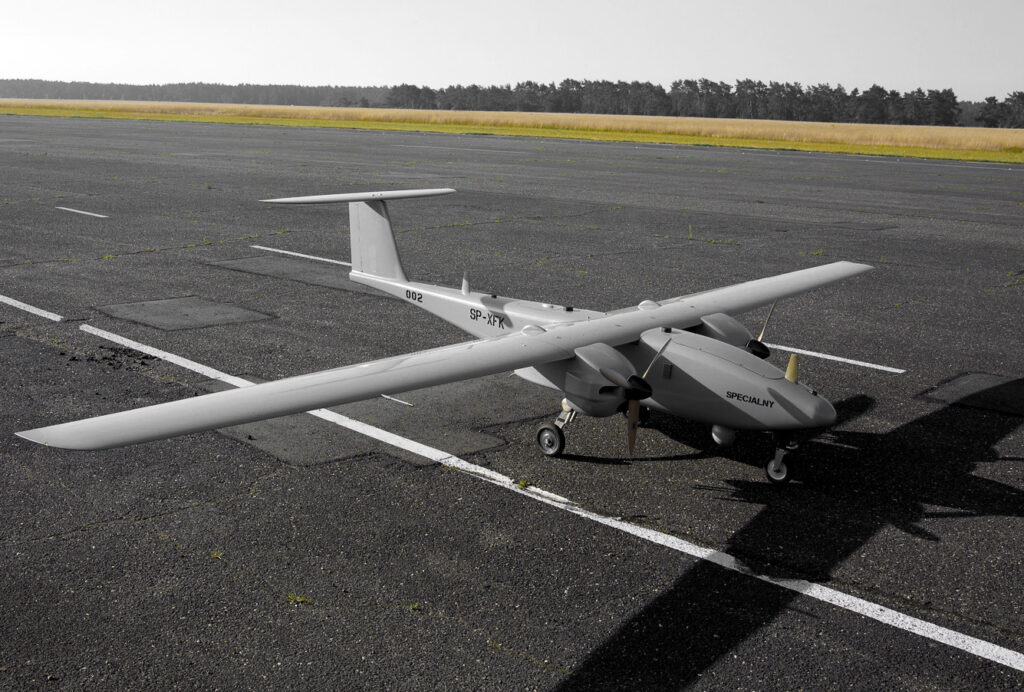On August 12, WB Group revealed a number of selected systems and products they will be promoting during this year’s International Defence Industry Exhibition MSPO in Kielce. The presentation included an unmanned aerial system FT-5.
FT-5 design is a response to demands of Orlik Project, from which WB Group was excluded. It can be used for various purposes—reconnaissance and intelligence missions, observation, escorting, monitoring of disasters, or patroling national borders.
Unmanned aerial vehicle has a wingspan of 6.4 m and length of 3.1 m. It has a take-off weight of 85 kg. FT-5 was designed with three different engine types, all of them using two engines with propellers. The first one is electric, capable of staying airborne for four hours. Another version uses a combustion engine with a flight length of ten hours. Third variant has a hybrid engine. A combustion engine within the hull provides electricity to electric-powered propellers. That solution provides flight length of up to fourteen hours.
FT-5 with all the listed engine variants can start from hardened surfaces like a regular plane. The representatives of Flytronic company assure that 100 meters of paved surface will suffice for take off or landing—it doesn’t have to be a runaway, mere road or parking lot will be fine. What’s more, FT-5 takes off and lands autonomously, requiring no attention from the operator during those complicated phases of flight.
Two-engine construction provides a large supply of power, allowing FT-5 to reach its maximum ceiling of 5000 meters above sea level much faster than competing designs with similar purposes. The plane’s engines allow for a maximum speed of 155 kph, though during the missions the vehicle usually maintains 100 to 110 kph.
The primary sensor carried by FT-5 is a camera working in infrared and visible light bands. Camera working in infrared frequencies is cooled, and has resolution of 640×512 pixels. It is capable of 15x optical and 4x digital zoom. Visible light camera has a CMOS sensor with resolution of 3840×2160 pixels. That camera offers 30x optical and 4x digital zoom capabilities. The sensors also include laser rangefinder with a static range of 15 km and range in motion of 10 km, and a laser target pointer.
FT-5 can be also equipped with COMINT/ELINT electronic warfare sensors, contamination detectors, and weapons. Communication systems used by the unmanned aerial vehicle allow for an operational range of 180 km with direct contact. The plane can fly autonomously along the predetermined route (even with the loss of radio contact), with the option of modifying it in-flight. When the contact is lost, the plane can either autonomously return back into signal range or land in a predetermined spot.
The plane’s personnel is composed of four people needed for its assembly and disassembly. The system can be transported in an off-road car.
Variant of FT-5 unmanned aerial vehicle equipped with combustion engine / Photo: WB Group





Comments
Nobody has commented on this article yet.